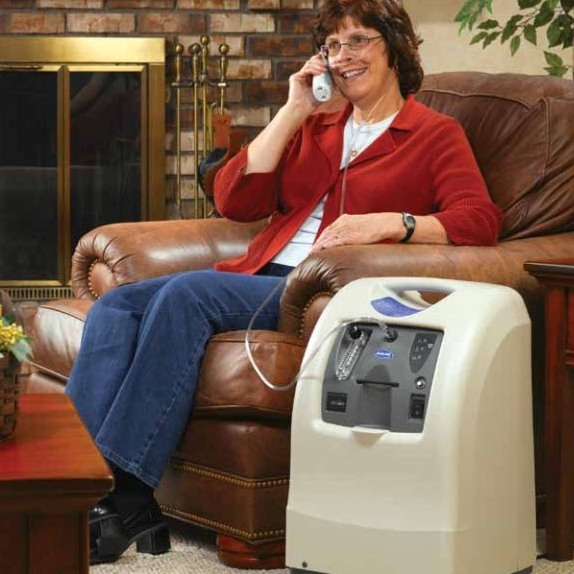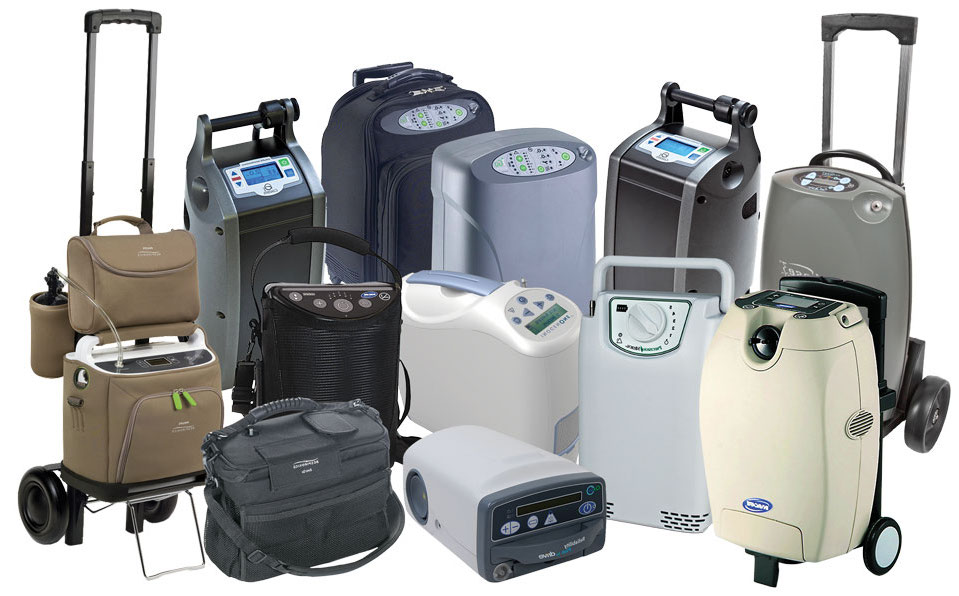There’s nothing more horrifying than the fear of not getting enough oxygen and feeling suffocated. Thanks to advances in medicine, portable oxygen concentrators have made the lives of respiratory sufferers easy and smooth.
Traditional oxygen concentrators were heavy and bulky, making it difficult for patients who are dependent on oxygen therapy to travel and go outside the home. However, modern ones are portable and can travel with you.
What Is An Oxygen Concentrator?
An oxygen concentrator is a medical device that is used for delivering oxygen to the person who suffers breathing-related disorders. It is for those whose oxygen concentration in the blood is lower than the normal.
It is said that the air we breathe contains 21% oxygen with 78% nitrogen and 1% other components. However, concentrators are equipped with sieve beds and special beds that help to remove nitrogen content from the air. Once removed, there will be 87-95% pure oxygen which patients get through a mask or tube. Furthermore, these concentrators come with an electronic users interface to let you adjust the level of the oxygen supply.
 Portable Concentrators Vs. Non-Portable Concentrators
Portable Concentrators Vs. Non-Portable Concentrators
Portable concentrators operate using the pulse delivery system, letting the puff’s of oxygen deliver oxygen with ease. In this, the pulse delivery system will rely on your ability to sync breathing with the rhythm of the machine. Also, there are battery powered portable oxygen concentrator that are light and easy to handle.
Non-Portable Concentrators
Non-portable oxygen concentrators operate by using the continuous flow delivery; a continuous stem of oxygen flows in the machine to make you breathe easier. Patients with serious pulmonary diseases might need this type of machine. Also, non-portable concentrators can easily run 24×7 without any hindrance.
How Does an Oxygen Concentrator Work?
Let’s imagine your oxygen concentrator as a window AC. Now, what does an air conditioner do? It takes in air, changes it, and deliver cool air. The same process goes with oxygen concentrator- it takes air in and purifies it to use it for the patients who are dependent on medical oxygen. It works by:
- Compressing air as cooling mechanism protect the concentrator from overheating
- Grasping air from its surroundings
- Purifying oxygen by removing nitrogen from the air through filter and sieve beds
- Providing purified oxygen through the nasal cannula or mask
- Advantages of portable oxygen concentrator:
- Complete freedom from carrying heavy, long tubes and tanks:
Portable oxygen concentrators make things accessible and easy to carry. Unlike the traditional machines and oxygen tanks that were bulky and heavy, the portable concentrators are easy to carry on the go. With portable concentrators, you don’t have to worry about the unlimited supply of the oxygen and don’t have to carry additional tank.
No More Refilling:
With them, you don’t have to worry about refilling tanks. Instead, you can easily switch with AC power at home and DC of the vehicle to the independent battery powered. Plus, you are not bounded to schedule your life on how long the tank will last and the number of bottles you need to carry when you leave home.
Mobility:
Portable concentrators offer great mobility as they are lightweight, small, and are quite convenient. Some concentrators also come with accessories like extra batteries, backpacks to make traveling smooth and easy.
Diseases That Require Oxygen Therapy:
Some chronic disease that requires oxygen concentrators are:
Chronic Obstructive Pulmonary Disease (COPD): With over 16 million people suffer from chronic obstructive pulmonary disease, with oxygen therapy being the most effective treatment for such patients. COPD makes it difficult for the lungs to get enough oxygen, making it difficult for you to breathe; that’s when oxygen concentrator comes handy.
Cystic Fibrosis: Cystic fibrosis affects the digestive system and lungs, and also affect body cell’s that helps to produce mucus, sweat, and digestive juices. This hampers the patient’s ability to breathe, which oxygen concentrator help minimizing.
Sleep Apnea: It’s a sleeping disorder that makes breathing sporadically stop during sleep. Although the exact treatment of this condition is using continuous positive airway pressure (CPAP), physical exercise, some people might require oxygen therapy to treat this condition.
Lastly, portable oxygen concentrator can benefit you in many ways as a patient. After all, having accessibility to enough supply of oxygen will make you feel secure, thereby enjoying the complete freedom and flexibility.
